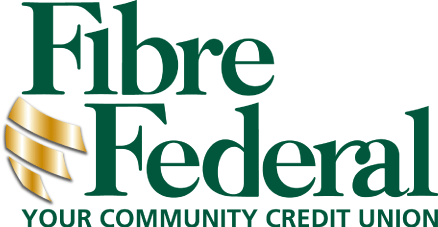Fibre Federal Credit Union Money Matters: Students Take Financial Lessons From the Classroom to the Real World
Four months ago, Holly Snook didn’t know how to write a check. Now, the Seaside High School freshman is planning to enter college as a business major.

Originally posted on dailyastorian.com
The difference over the course of a few months was Banzai, a program that partners financial institutions with local teachers and students to teach money management and financial literacy. Recently, Seaside High School partnered with TLC Fibre Federal Credit Union to provide the program for local students.
Since June, Fibre has spent more than $6,150 in Clatsop, Lincoln and Tillamook counties in Oregon, and Pacific County in Washington, to provide area schools with the Banzai program, said Fibre Community Outreach Coordinator Shannon Cahoon.
The program comes at a time when 43 percent of adults in the United States and 77 percent of adults worldwide are financially illiterate, according to a recent Standard and Poor’s Global Financial Literacy Survey. The survey measured adults’ knowledge of basic financial concepts including risk diversification, numeracy and compounding interest. The final report also identified young people as a group vulnerable to financial illiteracy.
The goal is to make students educated consumers, Cahoon said. The program provided at school can play an important part in filling financial education gaps that students’ parents might not be equipped to fill on their own, she said. In some cases, students’ parents are making mistakes in their own finances, Cahoon said, and can’t pass on better financial skills because they don’t those skills themselves.
Partnering with local high schools allows the credit union to provide students with the necessary financial skills that could help them avoid serious financial problems in their futures, Cahoon said.
Real life curve balls
Snook and junior Kara Ipson recently completed Seaside High School’s first term of the Banzai program. Both young women said the program taught them financial skills they never knew they needed.
Those skills included, for Snook, learning to write a check. The program covered more substantial financial hurdles as well, though, including the concept of venture capital and saving for significant expenses, like college tuition.
Part of the Banzai program includes real-life simulations that focus on saving for emergencies and setting aside funds in imaginary jars to budget for expenses. The simulations have helped Ipson manage her money more efficiently, something that will help her as she heads into college, when her budget is likely to be tight, she said.
“I always think about the jar simulation kind of thing and budgeting and how that will benefit me managing money,” she said.
Part of what makes the program particularly effective are the simulations of realistic, unexpected expenses that students have to deal with throughout the program, Brown added.
“Things are great, you’re saving up the money, and then the car breaks or you get sick,” said Mike Brown, a Seaside High School teacher who taught the first semester of the Banzai program. “You get real-life curve balls, and suddenly that pot of money that looked really good is going to pay medical bills or something.”
Both Ipson and Snook said they’ve made changes in their own financial practices after completing the program.
“I never thought about keeping a large amount of money away for in case you get in a car accident or something and insurance doesn’t cover it. That kind of stuff, if it springs on my in real life, now I’ll kind of know what to expect,” Ipson said.
Snook added that she had plans to set aside a budget for Christmas shopping out of an upcoming paycheck, and put the rest away in savings for future expenses.
Early education
Part of the goal of the partnership is for financial management skills to become second nature to students as they head into life after high school, Cahoon said.
“High school students are particularly an important population for me because that’s when they’re poised to get so many offers and have so many opportunities to make mistakes, and those mistakes are going to stay with them for years,” she said.
Brown echoed a similar message to Cahoon’s — getting financial literacy to students early on is critical.
In particular for students heading to college, proper money management at that time could mean the difference between a successful college career and dropping out, Cahoon said.
More than 60 percent of college students in Oregon will graduate with student debt that averages more than $26,000, and the numbers in Washington are the similar, according to the Institute for College Access and Success’ Project on Student Debt.
Regardless of their plans after high school, laying the groundwork for financial literacy is critical, Brown said.
“My hope is that they have a little greater awareness of where does the money in their life come from, how do they earn it and how do they spend it or save it,” he said. “These guys will have to become self-reliant in the really near future and you can’t just do it in one day.”
Teachers interested in using the Banzai program can visit teachbanzai.com or call 888-8-BANZAI.